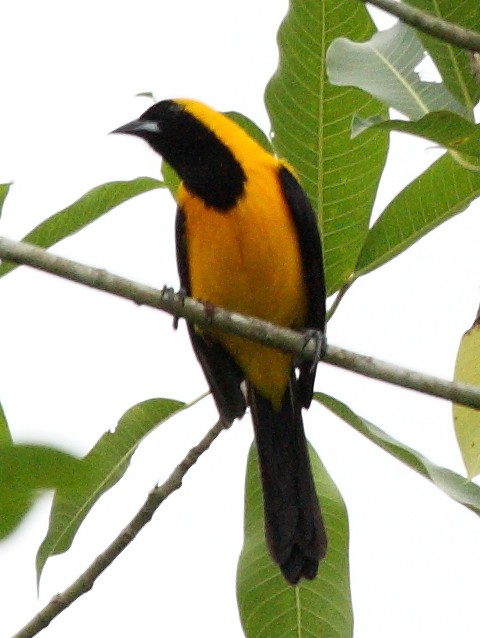Yellow-backed Oriole
A species of New world orioles Scientific name : Icterus chrysater Genus : New world orioles
Yellow-backed Oriole, A species of New world orioles
Botanical name: Icterus chrysater
Genus: New world orioles
Content
Description General Info
 Photo By Dominic Sherony , used under CC-BY-SA-2.0 /Cropped and compressed from original
Photo By Dominic Sherony , used under CC-BY-SA-2.0 /Cropped and compressed from original Description
Yellow-backed orioles are a yellow-bodied, sexually monomorphic species. They average 21.5 cm (8.5 in) in length from beak to tail; making it a relatively medium-sized oriole species. Exposed skin and claws are bluish-black; in adults, the bill is black, with the base of the mandible becoming bluish-grey. Adult males display strongly contrasting yellow and black plumage. The wings, tail, shoulders, throat, and face are all black; by contrast, the back and underparts are an extremely bright yellow. Adult females closely resemble males, but yellow parts appear slightly greenish. Despite differences in plumage coloration between sexes, it is likely that this species is extremely difficult to sex in the field. Immature yellow-backed orioles resemble adult females in overall pattern, but are greener; additionally, the flight feathers, which are black in females, are dark brown. Immature yellow-backed orioles are easily distinguished from adult females by their olive eye-line. Similar species include the South American yellow oriole (Icterus nigrogularis). 
Size
24 cm
Nest Placement
Tree
Feeding Habits
Yellow-backed Oriole primarily consumes insects, arthropods, fruits, and nectar. Yellow-backed Oriole typically forages in trees and shrubs, exhibiting versatile feeding behaviors. Yellow-backed Oriole possesses a notable preference for certain fruits and has adapted to extract nectar efficiently.
Habitat
The yellow-backed Oriole is typically found in a range of habitats from native pine woodlands to montane oak woodlands across Central America. These birds are adaptable, thriving in areas like dry thorn-woodlands and scrubs, as well as at the edges of primary and secondary forests. In some regions, they can also be found in modified landscapes such as coffee plantations, clearings, and cultivated lands with forest patches, from elevations of 500 to 2800 meters.
Dite type
Frugivorous
General Info
Feeding Habits
Bird food type

Fruit
Distribution Area
Yellow-backed orioles are found throughout Central America and northern South America. In particular, the species is divided into three allopatric populations. One population, designated as the subspecies I. c. giraudii, is endemic to southern Central America, including Nicaragua, Panama, and Colombia. The northernmost populations comprise the subspecies I. c. chrysater and I. c. mayanensis; these subspecies are found in northern Central America and in southern Mexico. The species is found in Belize, Colombia, El Salvador, Guatemala, Honduras, Mexico, Nicaragua, Panama, and Venezuela. Yellow-backed orioles are able to tolerate a wide variety of habitats, but prefer open, mixed pine-oak woodlands and dry scrub forest. This species has also been sighted in banana plantations. It has occasionally colonized lowland deciduous forest. This species is usually found in regions that are less than 900 m (3,000 ft) in altitude, though in Central and South America populations are often seen residing at elevations greater than 1,000 m (3,300 ft). The upper altitude limit for populations observed in the wild appears to be about 3,000 m (9,800 ft). 
Species Status
Not globally threatened.
Scientific Classification
Phylum
Chordates Class
Birds Order
Perching birds Genus
New world orioles Species
Yellow-backed Oriole